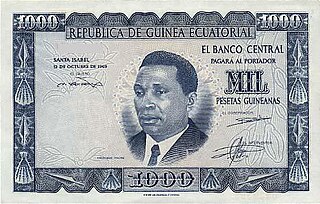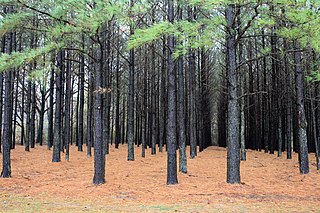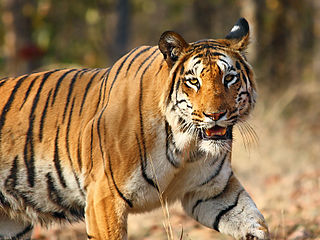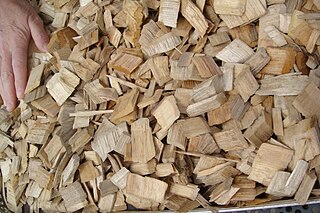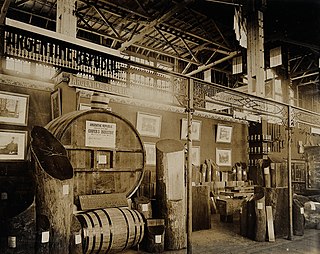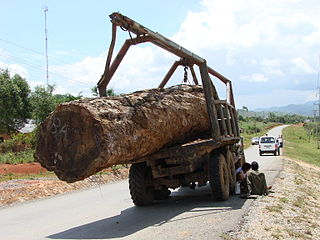This article needs to be updated.(November 2010) |
Gabon’s forests, which cover an estimated 77% of its land surface, have always supplied many of the necessities of life, especially fuel and shelter. The forests contain over 400 species of trees, with about 100 species suitable for industrial use. Commercial exploitation began as early as 1892, but only in 1913 was Okoumé, Gabon’s most valuable wood, introduced to the international market.
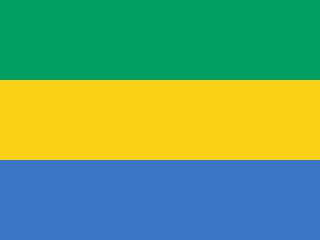
Gabon, officially the Gabonese Republic, is a country on the west coast of Central Africa. Located on the equator, Gabon is bordered by Equatorial Guinea to the northwest, Cameroon to the north, the Republic of the Congo on the east and south, and the Gulf of Guinea to the west. It has an area of nearly 270,000 square kilometres (100,000 sq mi) and its population is estimated at 2 million people. Its capital and largest city is Libreville.

A fuel is any material that can be made to react with other substances so that it releases energy as heat energy or to be used for work. The concept was originally applied solely to those materials capable of releasing chemical energy but has since also been applied to other sources of heat energy such as nuclear energy.
Forestry was the primary source of economic activity in the country until 1968, when the industry was supplanted by crude oil as an earner of foreign exchange. Gabon is the largest exporter of raw wood in the region, and its sales represent 20% of Africa’s raw wood exports. Forestry is second only to the petroleum sector in export earnings, at $319.4 million in 2003. Gabon’s reserves of exploitable timber include: okoumé, 100 million cubic meters; ozigo, 25–35 million cubic meters; ilomba, 20–30 million cubic meters; azobé, 15–25 million cubic meters; and padouk, 10–20 million cubic meters.
Ilomba is a sea snake with destructive powers in the mythology of the Lozi people of Zambia. It is created by a witch doctor. It is made with their finger nails and blood from their forehead, back, and chest. They mix it in a pan with herbs that were considered to have a magical force. It is usually fed with eggs and porridge when it is young because its fangs are not fully developed. It takes on the identity of the person that owns it. The owner will command it to kill a person. The victim will see the witch doctor's face in place of the Ilomba's, but the other people will view it as a normal snake. It bites into its prey then consumes its soul. If it is killed, the owner feels the pain, and then dies. If the owner dies, it dies. If the witch doctor stops supplying food to it, it will turn on its master and consume them. The only way it can be destroyed is through the witch doctor. When the witch doctor does kill it, they will be constantly haunted by the souls that the Ilomba consumed.
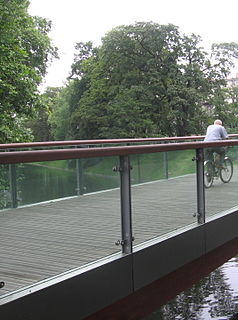
Lophira alata, commonly known as azobé, ekki or thered ironwood tree, is a species of plant in the family Ochnaceae. It is found in Cameroon, the Republic of the Congo, the Democratic Republic of the Congo, Ivory Coast, Equatorial Guinea, Gabon, Ghana, Liberia, Nigeria, Sierra Leone, Sudan, and Uganda. Its natural habitat is subtropical or tropical moist lowland forests. It is threatened by habitat loss.
Gabon supplies 90% of the world’s okoumé, which makes excellent plywood, and also produces hardwoods, such as mahogany, kevazingo, and ebony. Other woods are dibetou (tigerwood or African walnut), movingui (Nigerian satinwood), and zingana (zebrano or zebrawood). Roundwood removals were estimated at 4 million cubic meters in 2004, with 13% used as fuel wood.

Plywood is a material manufactured from thin layers or "plies" of wood veneer that are glued together with adjacent layers having their wood grain rotated up to 90 degrees to one another. It is an engineered wood from the family of manufactured boards which includes medium-density fibreboard (MDF) and particle board (chipboard).
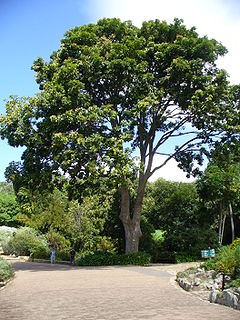
Mahogany is a straight-grained, reddish-brown timber of three tropical hardwood species of the genus Swietenia, indigenous to the Americas and part of the pantropical chinaberry family, Meliaceae.

Ebony is a dense black hardwood, most commonly yielded by several different species in the genus Diospyros, which also contains the persimmons. Ebony is dense enough to sink in water. It is finely-textured and has a very smooth finish when polished, making it valuable as an ornamental wood. The word ebony comes from the Ancient Egyptian hbny, through the Ancient Greek ἔβενος (ébenos), into Latin and Middle English.
Exploitation had been hampered, to some extent, by the inadequacy of transportation infrastructure, a deficiency now alleviated by the Trans-Gabon Railway and Ndjole-Bitam highway. Reforestation has been continuously promoted, and selective thinning and clearing have prevented the okoumé from being forced out by other species. Over 50 firms are engaged in exploitation of Gabon’s forests. Logging concessions covering about 50,000 square kilometres (19,000 sq mi) have been granted by the government, with the development of the least accessible areas largely carried out by foreign firms. Traditional demand in Europe for African lumber products has declined in recent years; during the 1980s, European demand for okoumé dropped by almost one-third. Markets in Japan, Morocco, and Israel, however, have become more receptive to African imports.

The Trans-Gabon Railway is the only railway in Gabon. It runs 670 km east from Owendo port station in Libreville to Franceville via numerous stations, the main ones being Ndjolé, Lopé, Booué, Lastoursville and Moanda.

Morocco, officially the Kingdom of Morocco, is a country located in the Maghreb region of North West Africa with an area of 710,850 km2 (274,460 sq mi). Its capital is Rabat, the largest city Casablanca. It overlooks the Mediterranean Sea to the north and the Atlantic Ocean to the west. Morocco claims the areas of Ceuta, Melilla and Peñón de Vélez de la Gomera, all of them under Spanish jurisdiction.

